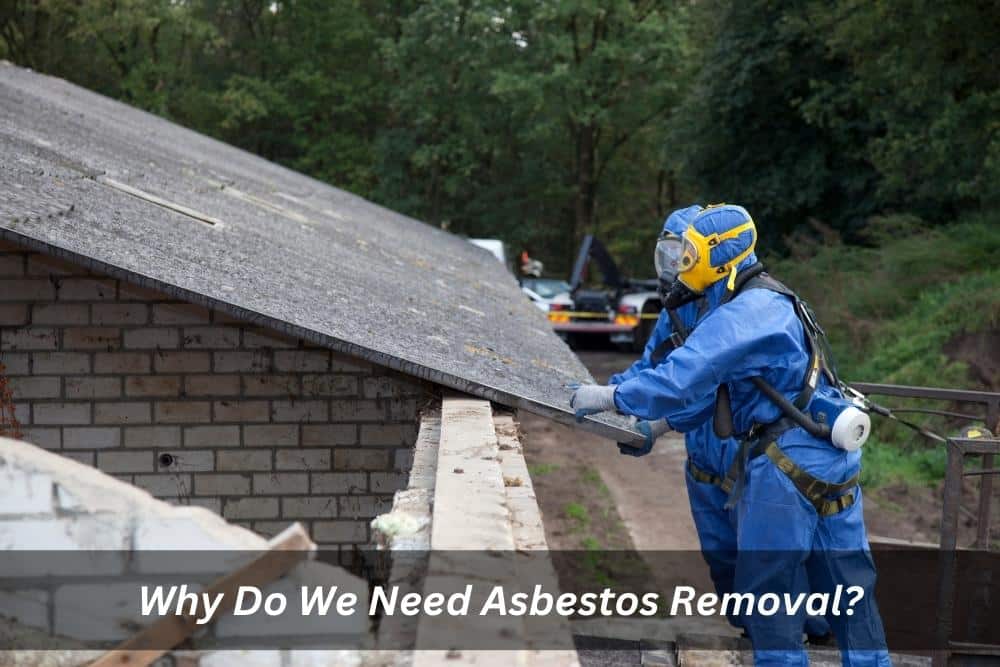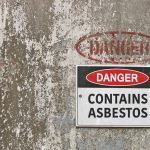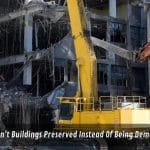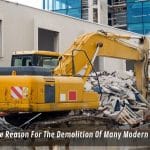In recent years, the dangers of asbestos have become increasingly apparent. It is essential to understand why asbestos removal and disposal are necessary, as exposure to asbestos fibres can cause serious health risks. Asbestos is a naturally-occurring mineral found in some building materials and it can be disturbed if not handled with care. This article will explain why removing asbestos is important, what needs to be done if it is disturbed and the dangers associated with not doing so.
What is Asbestos?
Asbestos is a naturally occurring mineral composed of microscopically small fibres. It has been used extensively in construction materials for insulation and fireproofing, as well as in automotive parts, ships, aeroplanes, and other products. Asbestos fibres are extremely durable and resistant to heat, fire and chemicals, making them an ideal material for many applications. However, when these fibres are disturbed, they can become airborne and can be inhaled, leading to potential health risks.
What is the reason for removing asbestos?
It is important to remove asbestos safely because it can be dangerous if disturbed. The tiny fibres can become airborne and thus inhaled by individuals in proximity to the material. If asbestos is left undisturbed, it won’t pose a risk; however, if disturbs asbestos, the fibres can be released and may cause serious health risks.
Asbestos exposure can lead to respiratory illnesses such as desmoplastic mesothelioma and asbestosis, as well as other non-malignant diseases. To minimize health risks, it’s crucial to handle the removal of asbestos materials properly.
What are the different types of building materials that contain asbestos and how can they be identified?
Asbestos can be found in many different types of building materials, including ceiling tiles, insulation, floor tiles and sheets, roof shingles and siding, textured paints and plaster. Asbestos can also be found in pipe insulation and boiler insulation. Also, asbestos can be hard to detect in materials when it’s mixed with other substances like cement or gypsum.
The only way to determine whether a material contains asbestos is through laboratory testing. Also, it is important to consider that the age of the building and any renovations or repairs done within it can impact the presence of asbestos, so it is best to consult with asbestos removal companies if you are uncertain.
What are the health risks associated with asbestos exposure?
The health risks associated with asbestos exposure can range from minor to serious, depending on the amount of exposure and how it is encountered. Inhaling or ingesting airborne asbestos fibres can lead to respiratory problems such as mesothelioma, asbestosis, and other non-malignant diseases. Other health risks include lung cancer, asbestos pleural plaques, and pleural effusions. It is important to note that the risks of exposure to asbestos increase with the amount and duration of exposure, as well as the type of asbestos.
What is Involved in removing asbestos?
Removing asbestos and disposal can be a complicated process. It is important to hire a competent person, such as a licenced asbestos removalist, as they know how to identify asbestos, how to remove them safely and how to dispose of them properly. The removalist will also need to set up a work area with appropriate personal protective equipment (PPE), as well as air monitoring equipment, to ensure that no asbestos fibres are released into the environment during the removal process.
What is the significance of using personal protective equipment and air monitoring during removal?
Using appropriate personal protective equipment such as respirators, overalls and safety glasses is essential during asbestos removal. This equipment helps to minimise the inhalation of any airborne fibres and drastically reduces the risk of health hazards.
Air monitoring should also be conducted throughout the entire removal process. This involves testing for airborne asbestos fibres to ensure levels remain below safe limits. Both of these methods are essential in ensuring a safe and effective asbestos removal process.
How important to have work health and safety regulations for removing asbestos?
Safety rules are crucial in asbestos removal to protect workers from harmful fibres. Asbestos is a naturally occurring mineral that was commonly used in building materials until its health risks were discovered. The inhalation of airborne fibres from disturbed asbestos-containing materials can lead to severe respiratory illnesses, including lung cancer and mesothelioma.
Asbestos removal work is a high-risk activity that requires specialised training and equipment to be performed safely. The lack of appropriate regulations leaves workers vulnerable to hazardous asbestos fibres, potentially resulting in severe health risks. Therefore, it is crucial to have regulations in place to ensure that asbestos removal is carried out safely and effectively.
Work health and safety regulations for asbestos removal include requirements for training and certification, PPE and safe work procedures. These regulations help to minimise the risk of exposure to asbestos fibres and ensure that workers are protected from harm.
Compliance with work health and safety regulations for asbestos removal is not only important for the health and safety of workers but also for the public. Asbestos fibres can be released into the air during removal, posing a risk to anyone in the vicinity. To ensure the safe and controlled removal of asbestos, regulations must be put in place.
In summary, removing asbestos can be a dangerous task. By adhering to safety regulations, acknowledging potential hazards, and taking appropriate measures, asbestos removal can be performed safely and efficiently.
If you are having asbestos removed from your home or property, it is important to hire Almighty Demolition, we are a licenced asbestos removalist trained in the safe handling and disposal of asbestos materials. We also follow Australian standards for asbestos removal to ensure that the removal process is conducted safely, with minimal risk of exposure to airborne asbestos fibres. So, call us today to discuss your asbestos removal needs.







